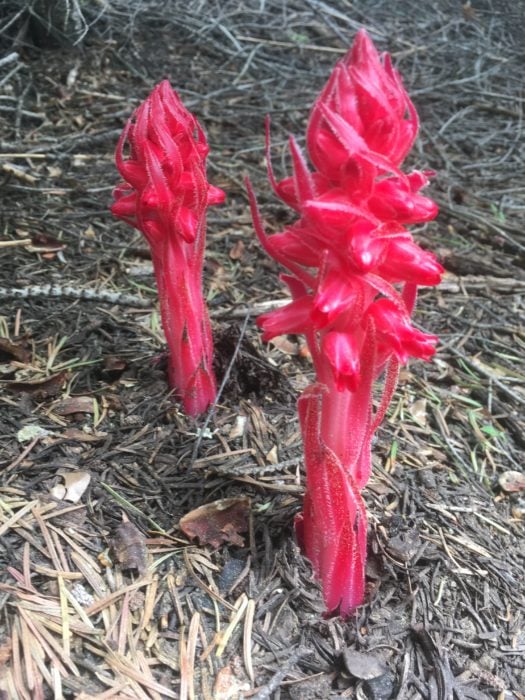
I found these under a group of giant sequoia at Alder Creek last summer. It was fascinating, in a place where looking up is so mandatory, to find something so unique by looking down.
How the snowflower comes to exist is kind of interesting. It doesn’t produce chlorophyll, and is instead fed from fungi that lives underneath the soil. These fungi actually live in a symbiotic relationship with the giant sequoia and other coniferous trees. The trees use them to bring water and minerals to their roots, and the fungi gets some of the products of its photosynthesis. The snowflower takes advantage of all this by parasitizing the fungi of the photosynthate from the tree. In a way, the snowflower is a parasite of the tree itself, which is why you’ll always see them near the conifers, poking up out of the ground.
The Forest Service has more about this plant, if you’re interested in learning more.
Anyway, all this makes for a very cool plant, the visible portion of which is all red, and about a foot tall. Look for them next time you’re in the big trees.


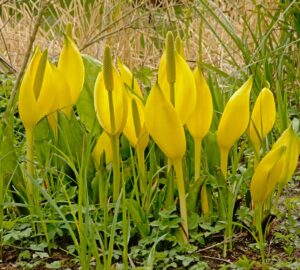
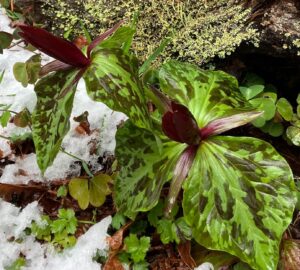
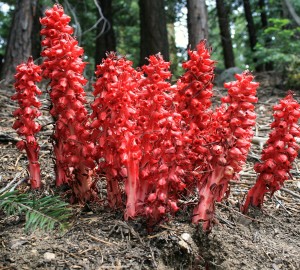
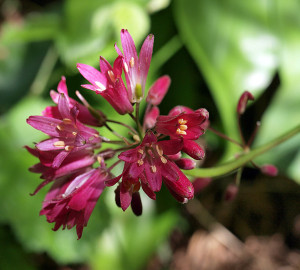
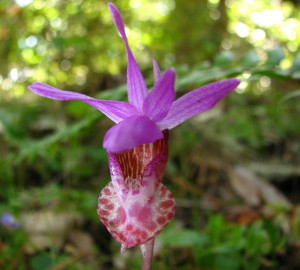
One Response to “The bloody flesh-like thing”
Bob Miller
I grew up on the EAST Coast, so when I first went to the Mariposa Grove in Yosemite as a nature photographer in 1989, I was AMAZED to see this “red asparagus-looking” plant. I swear the following is TRUE: just about every plant had a little sign next to it stating that this was a threatened plant, and to please be careful around them. Ever since, this is one of my all-time favorite plants. In fact, I LOVE ALL saprophytes. While they usually are 12-18″, I saw one in Oregon, right by the side of the road, that was about 3′ tall! This and the calypso orchid are my 2 favorite coniferous forest flowers. If you are luck to see one, I honestly believe you won’t forget it!